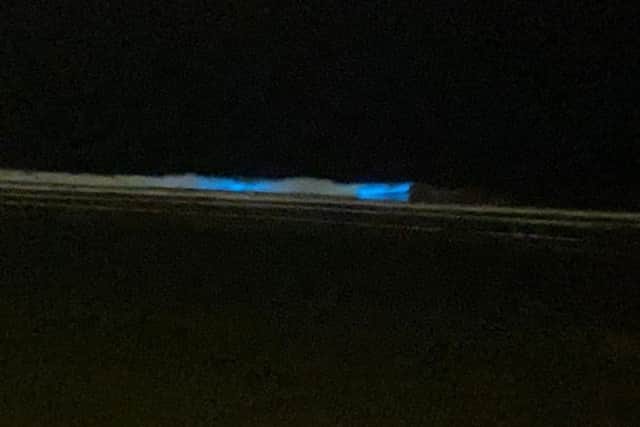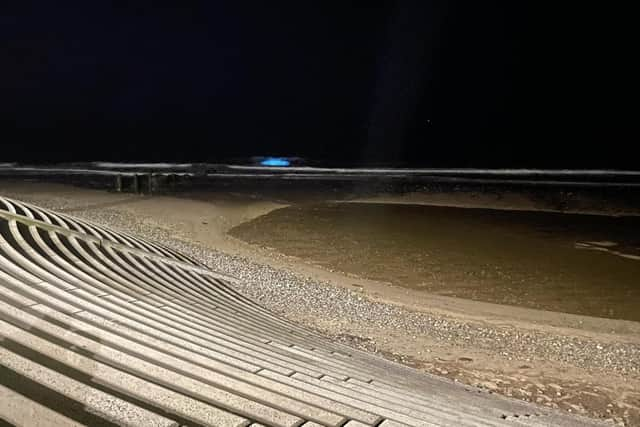Bioluminescence causes rare blue tide in Cleveleys
and live on Freeview channel 276
The rare natural phenomenon was captured on camera by Lynn Redman who spotted the blue waves glowing along Rossall Beach in Cleveleys at around 8.30pm.
Another local resident, Justin Edge, was mesmerised by the luminous blue tide as she walked along North Promenade, near Vue cinema.
Advertisement
Hide AdAdvertisement
Hide AdShe couldn’t resist going for a paddle in the unearthly blue surf as it sparkled around her ankles in the darkness.


"It was beautiful,” said Justine. “I had to get in the water! It sparkles all round you.”
It’s not the first time this rare natural phenomenon has been seen along the Fylde Coast.
In September, Kyle Garner-Jones captured the blue waves breaking on the beach at Bispham. You can watch the footage in our video player.
Advertisement
Hide AdAdvertisement
Hide AdThe phenomenon is known to occur across the globe where the oceans are rich in phytoplankton, including California, Australia and Japan, but it much rarer on British and European coasts.


What is a bioluminescent tide?
This natural phenomenon can be seen when there is lots of bioluminescence in the water, usually from an algae bloom of plankton.
These tiny creatures have the ability to emit light when disturbed by a predator and cause a bioluminescenct tide. The sparkling blue light is to deter predators from eating them.
Bioluminescent plankton proliferate when the sea is quiet, water temperature is hot and when there is a bit of wind. If these conditions are met, you might be lucky enough to see the ocean begin to sparkle.